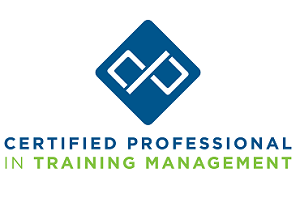The facts are sobering: Women ended 2020 with 5.4 million fewer jobs than they had in February, before the COVID-19 crisis took the economy (and the world) by storm, according to the National Women’s Law Center’s calculations based on data from the U.S. Bureau of Statistics. Men lost 4.4 million jobs during that same time period.
Even with widespread vaccinations underway, the pandemic’s disproportionate impact on women’s careers isn’t going away any time soon: The World Economic Forum (WEF)’s 2021 “Global Gender Gap Report” says it will take 135.6 years to reach gender parity, up 35 years from the 2020 report’s 99.5-year prediction.
Now more than ever, working women — and especially working moms — need quality training and support. Without it, companies across industries will miss out on skilled talent and more women will be forced to put their careers on hold.
A Wake-up Call
Millions of schools and day cares across the country closed due to COVID-19 last year. According to a Northwestern University report on the pandemic’s impact on gender equality, “based on the existing distribution of child care duties in most families, mothers are likely to be more affected than fathers [by school and day care closings].”
Women were also more likely to be laid off or furloughed than men during the crisis, in part because women are overrepresented in the sectors that were hardest hit by the pandemic, says Carol Fishman Cohen, founder and chief executive officer of iRelaunch, a company that helps organizations, universities and associations implement career reentry programs. Not surprisingly, the pandemic’s impact on women’s careers is compounded by existing challenges: a lack of access to affordable child care, inflexible work arrangements and policies, the uneven household division of labor, and lack of overall support and understanding for working moms.
Here are three ways L&D can help organizations on their quest to bring women back into the workforce stronger than ever:
1. Returnship Programs
Essentially high-level internships, returnships, also known as “return-to-work” or “career reentry” programs, can help women reenter the workforce by boosting their confidence and knowledge, providing valuable mentorship and skills, and expanding their networks, says Amber Rosenberg, an experienced life, career and executive coach.
While returnships help participants refresh their skills, they also help organizations evaluate “returners” as potential employees, says Colleen Curtis, chief community officer at The Mom Project, a career platform for working moms. “Then, everyone can gauge whether there is a good long-term fit. If not, the returnee at least has a more updated resume and an expanded network by which to launch their next move.” Returnships help put careers back on track, which Curtis says is “desperately needed now more than ever before.”
It’s important to remember that there are many reasons people choose to temporarily leave the workforce, whether it’s to care for a child or other family member, manage a short- or long-term disability, cope with grief after the death of a spouse, or travel, among other reasons, says Cohen, who took an 11-year career break herself before founding iRelaunch. Everyone’s circumstances are different, and leaders must support each returner’s unique needs and professional development goals.
Sara Lamback, a senior director on Jobs for the Future (JFF)’s workforce development team, says that flexibility is key for successful return-to-work programs. JFF’s Rapid IT (information technology) Training and Employment Initiative, made possible through a $10 million grant from the U.S. Department of Labor, pairs online instruction with in-person support services to ensure women with child care and other responsibilities aren’t left behind. “We know a lot of women are juggling a lot of different things as they return to the workforce,” Lamback explains. Companies need to meet them where they are to train — and retain — women reentering the workforce.
Although designing, developing and launching a successful returnship program may seem like quite the undertaking (especially when budgets are tight), the return on investment (ROI) is noteworthy: an expanded talent pool of skilled and experienced workers. For instance, of iRelaunch’s community of 86,000 professionals looking to return to the workforce, nearly 100% have bachelor’s degrees, 70% have graduate degrees and 70% had 10 years of work experience before their career break, Cohen says. “Companies that have return-to-work programs in place are going to be best positioned to engage with these women who left the workforce for reasons that had nothing to do with their performance,” she says.
2. Increased Access to Male-dominated Fields
Many technical careers like information technology (IT) and software development are ripe with job (and advancement) opportunities. However, many of these fields are male dominated. The WEF’s 2021 “Global Gender Gap” report confirmed that women are significantly underrepresented in industries where job opportunities are growing. In cloud computing, for instance, women make up just 14% of the workforce, and in engineering, they comprise 20% of workers. Expanding access to male-dominated, yet in-demand, fields is another way L&D can help women return to work.
Data from LinkedIn’s economic graph team found that women face myriad challenges when trying to break into emerging fields. After working in the IT landscape for 25 years, Traci Fiatte, chief executive officer of professional and commercial staffing at Randstad U.S., watched gender diversity slowly dissipate as she “climbed the ranks.” Organizations must pave the way for women to be in leadership roles, especially in male-dominated sectors like IT, finance and accounting, she says.
“We need to recognize the specific challenges around gender disparity in fast-growing, future-facing roles,” says Sue Duke, LinkedIn’s head of global public policy, in “Working Together,” LinkedIn’s newsletter on equitable work. “Core to this is breaking down the barriers to these professions, and that includes making these areas of work more attractive for women.”
Normalizing flexible work, promoting work-life balance and eliminating any resemblance of a “boys club” culture is the first step in attracting women to male-dominated fields … but organizations also need high-quality training on future-forward skills, such as technology design and programming, resilience, reasoning, problem-solving and innovation.
One of the reasons JFF focused on the IT sector when looking to reskill displaced workers is because it’s a highly credentialed field. In IT, “employers often look to certifications and certificates to assess job readiness and understand the skills that will prepare [workers] for moving into the sector,” Lamback says. IT training is a “really strong opportunity” to diversity the IT sector both from a racial and gender lens.
Expanded access to training and professional certifications, and increased flexibility and support, can help women break into in-demand, yet male-dominated, fields.
3. Wraparound Support
Women reentering the workforce after a career break face a host of challenges. For working moms, there’s the “emotional preparation” needed to leave your child to go to work after taking care of him or her in person, says Natasha Prasad, chief customer officer at Cleo, a family benefits platform for employers. Leaders must learn how to provide emotional support and guidance for working moms transitioning back into the workforce. Fiatte agrees, noting that companies “have a responsibility” to recognize the challenges working parents face and offer increased flexibility accordingly.
Flexibility is key in bridging the gender gap, as one of the main reasons women don’t make it to the C-suite is because it requires a lot more working hours than lower-level positions, Fiatte says. Many jobs don’t have to be done during normal business hours, and managers should encourage employees to work when and where they can be the most engaged and productive.
“If a parent needs to head out the door at 5 p.m. in order to pick up a child from day care and then log back on [to work] for a couple hours at night, be flexible around that,” recommends Prasad. This flexibility should also extend to remote workers. After all, when your children are your co-workers, or when there’s a crying baby in the background of your big presentation, it can be “very hard to compartmentalize,” Prasad says.
COVID-19 shed a new light on the challenges working moms face, and it’s in employers’ best interest to enable them with the flexibility and support they need to succeed at work. “There is so much a mom can do that brings value to who they are as an employee,” Curtis says, from a mother’s determination to do the right thing when no one is looking to “how they somehow manage to raise our future generations to be successful, kind and generous all while balancing themselves and their home and the rest of their family needs.”
Through returnships, expanded access to male-dominated career fields, and improved flexibility and support, L&D can help women resume their careers without missing a beat.



